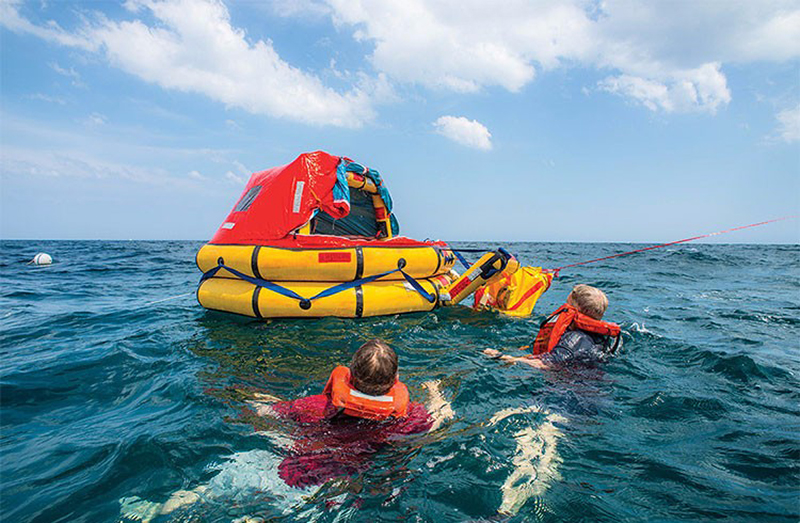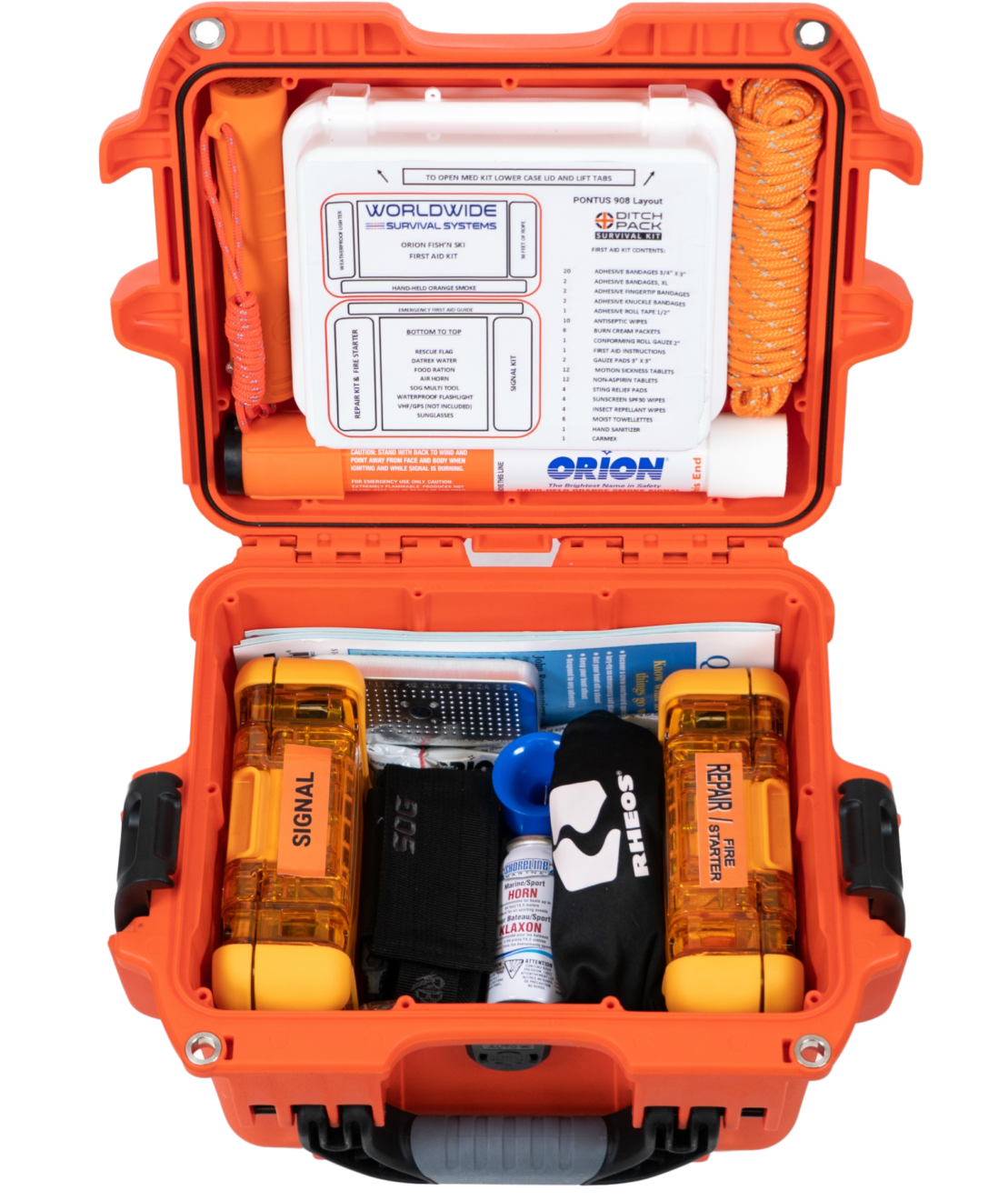Safety Briefings for On-the-Water Emergencies
The sun is out, the water is calm, and it’s another beautiful day for a boat trip. But that’s when the unexpected happens. Are you prepared? You’ve stored your Worldwide Survival Systems Ditch Pack, and you made sure you had enough life vests for everyone in the boat. You also made sure your satellite phone and Uniden VHF were fully charged. What else could there possibly be?
Be Prepared
There is a real difference between being ready for the water and being properly prepared. And there is a not-so-fine line between panic and fear. When a quick storm comes up, and things get rocky, everyone has a little fear that sets in. But panic is what happens when unprepared people must do something different from the norm. Panic is when everyone on board starts running around in different directions, with no one accomplishing anything.
What needs to be done to help subdue panic is quite simple: Never leave the dock without having a quick safety briefing. I talk about all the items that are important in different situations and pull them out, so people know that the ACR EPIRB is bright lime green, and the satellite phone is the little orange gadget just to the left in the overhead storage on the helm. (The Garmin’s inReach Explorer+ is a good choice.) I also quickly explain how both items work.
Next, I move on to life vests. I show where they are, take one down and fit it on the new guy. Then I show the Ditch Pack. I open it up to point out the item categories and describe the layout of the items inside. Finally, I touch on the life raft and how to deploy it. For us, we only use it once it is in the water.
For the last portion of our safety brief, I assign every person on the boat a job, only one job, should a situation arise:
- As the captain, I am always responsible for the ACR EPIRB and sat phone. It is my job, along with setting off the SOS on my fishfinder system. My EPIRB activates in the water, so it automatically powers up when I jump in.
- My most experienced guest is responsible for handing out a life vest to every person on my boat and making sure they immediately put it on. I also keep two extra vests next to two 100-foot lengths of rope in our front hatch. Part of his/her responsibility is also to grab that rope. My boat is of the size that there are never more than five people on it.
- The first person who goes in the water ties on to one of the 100-foot sections of rope. Then, as each person gets into the water, they tie on to the same rope. It is vital that everyone is close together if going overboard is the only option. Once everyone is in the water, you want to make sure everyone stays connected, to keep everyone safe as well as knowing each person’s location. This will also create a larger target for search crews.
- One person’s task is making sure our Ditch Pack is out and ready. You can send it over the side of the boat when at least one person is in the water.
- Once the second person has gone into the water, the person assigned to the life raft will begin deployment into the water. I also tell this person during our safety meeting that once the life raft is in the water they should go around the backside to weight it down and allow a couple of people the ability to enter it. The counterbalance keeps the life raft from flipping forward and making it impossible to enter.
- I am the last person to go into the water. It gives me a second to look around and make sure everything has been done.
This may seem like a lot of preparation for every trip, but keeping people focused on a singular job helps to avoid that frantic reaction to an emergency. These briefings can happen five to 10 minutes before you depart. Fear is not a bad thing — I fear snakes, but I have learned enough to know what to do if I see a snake or if one bites me. I also try to take the opportunity during our trip to ask each person what they are doing in an emergency. This is to make sure they remember their specific job and responsibility. I may do this two or three times during our trip. It helps set a level of comfort with everyone.
So, are you ready, or are you prepared? Are you serious about safety? Take a few minutes the next time you are heading out for an adventure on the water and ensure everyone else is prepared should a situation arise.



